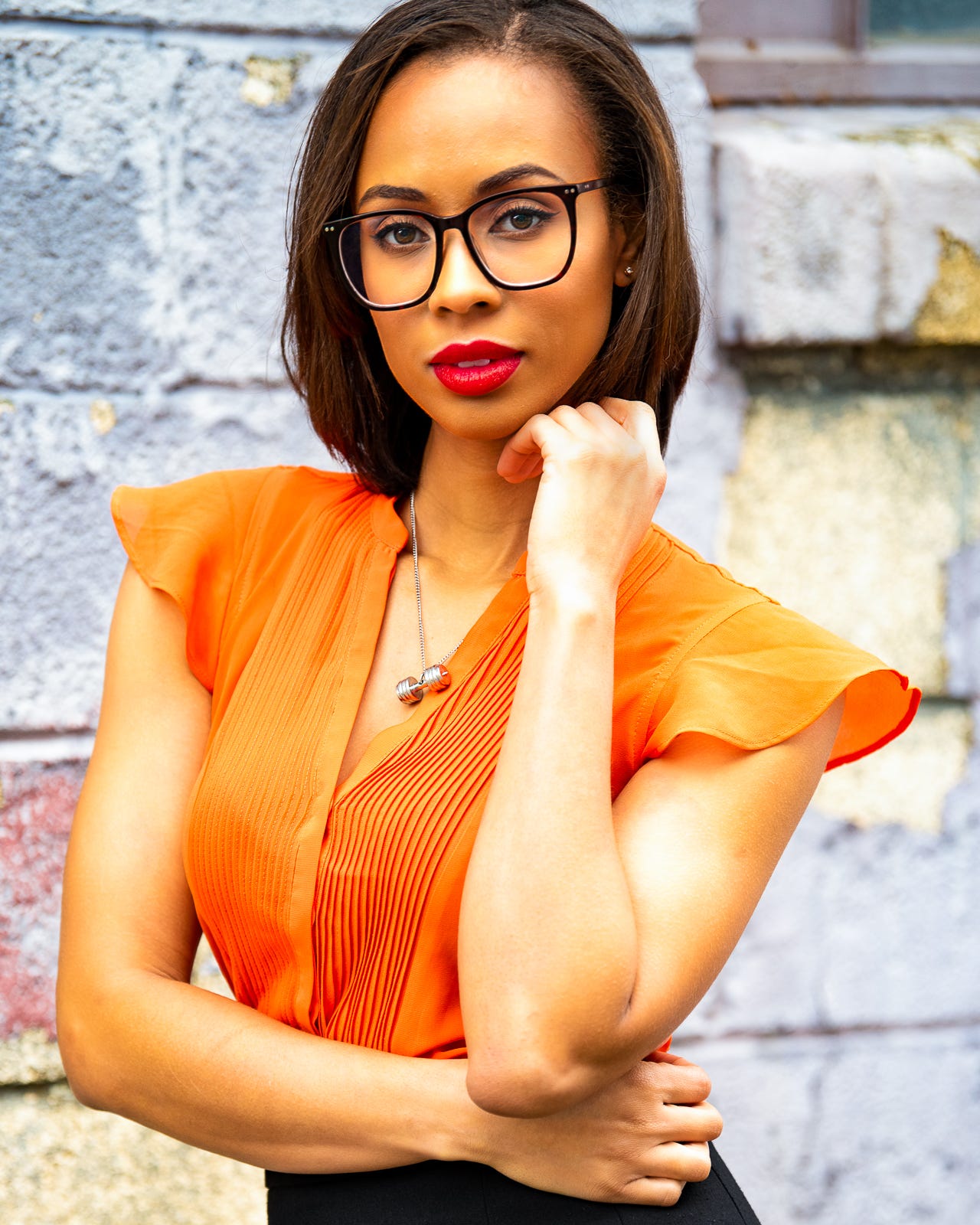Shifting Power through Bridge Building with India (Jackson) Tizol
“Bridge building invites us to be human again. But to do that, we have to let go of performative entrepreneurship and remember that relationships are not a strategy—they’re a value.” - India Tizol
If I could point to one person who has had an enormous and ongoing impact in my business and my life, it’s India Tizol. Behind the scenes, we’ve met for monthly calls, what we refer to as a CEO date, for over six years.
In that time, we’ve helped each other strategize offerings, navigate tough contractor relationships, and evolve our brands. Then, there’s the stuff that’s squarely not “business related,” but is infinitely more meaningful, like the space we’ve held for each other as we’ve left partners, become parents, and healed lifelong patterns.
Given India’s position in brand visibility, it’s not surprising that we gravitated toward each other. Especially since we’re both women of color who are deeply concerned with equity, ethical business, and integration.
A natural storyteller, India uses all the mediums – photography, the written word, website development, gatherings – to disrupt stereotypes and defy stale marketing advice.
At the core of her work, however, is a values-based practice that keeps her fired up: bridge building.
In today’s Q&A, I spoke with India about what bridge building is and how it relates to power, the historical references that undergird the practice of bridge building, and how we can become more adept at creating avenues that bring us together in a highly-siloed world.
ABOUT INDIA
As an athlete, photographer, and creative consultant to personal brands, India (Jackson) Tizol spent the first decade of her career watching as talented professionals were forced to adopt identities that were sellable but not authentic.
Watching the market flooded with an intense focus on follower count and crafted personas, she committed to taking a more aligned approach to influence-building. Her brand visibility firm, Flaunt Your Fire, now proudly helps entrepreneurs and their teams align their public image with their most deeply held beliefs.
In 2018, India co-founded Pause on the Play: a resource library, podcast, and consultancy committed to guiding individuals in the process of defining their values, diversifying their networks, and disrupting systems of oppression.
Her advice has been featured on over 100 podcast episodes and applied in businesses ranging from Christian Dior to Martha Beck Incorporated. To learn more about India’s work, check out the Flaunt Your Fire Podcast wherever you get your audio.
Website: https://flauntyourfire.com/
Substack: https://indiatizol.substack.com/
What is bridge building?
Bridge building is the act of creating connection where disconnection once lived. It’s about making space for people, ideas, experiences, brands, and identities that have been excluded or misunderstood—and constructing something that allows all of us to move toward each other with intention.
For me, it’s not a tactic or a business approach. It’s how I exist in the world. It’s the invisible thread that runs through how I parent, how I collaborate, how I challenge power, and how I move toward legacy instead of just survival.
Bridge building means calling people into complexity instead of pretending we all have the same experience. It means I can center under-recognized individuals, honor my own lived experience, and still make space for others to be themselves in conversation. That’s not contradiction—it’s integration.
It’s also about disruption. Real bridges require real labor. Sometimes you have to clear wreckage first. And the materials you use matter. I want the bridges I build to last—to invite others across, not just for a moment of unity, but for movement. For momentum.
What does it mean to be a bridge builder? What does that look like in practice?
Bridge building isn’t just part of my career—it’s my life’s work. I didn’t choose it as much as it chose me. It shows up in the way I partner, the way I amplify BIPOC founded brands, the way I speak up when something needs to change, the way I reclaim space that was never designed for me in the first place.
Bruce Manchion, a colleague at MindFull Healing Collective, once told me that you can't lead transformation from a place of safety. He reminded me that the real work—the healing, the legacy, the disruption—happens when we’re willing to be out in the open. I carry that with me. Because to build bridges, you have to be where the risk and the healing live side by side. That’s where I choose to be.
If you’re reading this and feeling something stir, I’ll say this: bridge building doesn’t always seem big. Sometimes it starts with a real conversation. An honest question. A risk you take to show up differently in your world. Don’t leave that spark unlit. That’s where the shift begins.
When we look at history, what examples do you find from individuals who were highly skilled at building bridges?
Clarence Avant inspires me—not just because he built bridges, but because he ensured those bridges led to tangible change.
Known as “The Black Godfather,” he wasn’t a flashy public figure, but his behind-the-scenes genius connected people, shaped culture, and opened doors that had been sealed shut for generations.
He didn’t just create opportunities—he restructured power dynamics. He used his influence to close deals that elevated Black talent and demanded better pay, respect, and representation for them. He saw possibility where others saw limitation, and then made that possibility undeniable.
The people he helped weren’t just artists or entertainers—they were visionaries who went on to build bridges themselves. That’s the kind of ripple effect I care about.
You change the room you’re in, so the next person doesn’t have to fight to enter it.
That’s legacy.
“He didn’t just create opportunities—he restructured power dynamics.”
We run businesses in an industry that feels highly siloed and dense with a power deferential based on economic standing, which makes the practice of bridge building feel even more critical. From your perspective, what is stopping online entrepreneurs from practicing bridge building?
Most entrepreneurs aren’t taught to value connection—they’re taught to value conversion. So when the goal is scaling quickly or optimizing for virality, it’s easy to treat people like metrics instead of like multidimensional humans.
But bridge building demands two things most entrepreneurs are taught to avoid: clear values and slowness. It requires listening when there’s no guaranteed ROI. It means investing in people you’re not sure will buy from you—and maybe shouldn’t. It requires the courage to say “I don’t know,” and to make space for contradictions, tension, and grief.
There’s also fear. The fear of getting it wrong. Of being rejected. Of burning bridges by speaking your truth. A lot of folks fear that if they slow down long enough to build a bridge, they’ll get left behind. And many of us, especially if we’re Black, Brown, or from under-recognized communities, have been taught that safety lies in silence or perfection.
Bridge building invites us to be human again. But to do that, we have to let go of performative entrepreneurship and remember that relationships are not a strategy—they’re a value.
Besides, bridge building isn’t just about reaching more people—it’s about becoming more human. And that’s not a one-time effort or tactic. It’s a practice.
“A lot of folks fear that if they slow down long enough to build a bridge, they’ll get left behind.”
What’s in your TBR pile right now?
I must admit, I read more than I watch movies or TV. I’ve been circling themes of legacy, rest, reclamation, and identity—especially as I navigate how to raise a Black and Puerto Rican son in a world that often makes both of those identities feel like too much and not enough at the same time.
So lately I’ve been reading:
Peace is Every Step by Thich Nhat Hanh – A breath of calm when I forget my body is allowed to rest.
Drama Free and Set Boundaries, Find Peace by Nedra Glover Tawwab – Not just for myself, but because I want my son to experience a different standard of emotional safety and expression.
Birth Story Brave Reimagined by Emily Souder – A therapist and personal friend who reminds me it’s okay that I’m still processing my birth story over a year later.
Who Are You?: A Shadow Work Journal for Self-Exploration by Erica Courdae Coté – When I want to dig deeper into who I am today beyond my roles and titles.
The Machine Stops by E.M. Forster – You sent me down this rabbit hole, Cher! And as I witness AI penetrate more areas of my life and industry, it’s hitting different.
Digital Dharma by Deepak Chopra – A beautiful contrast to the above—offering a hopeful, grounded view of technology and consciousness.
And for folks curious about what else is on my shelf, I’ve curated a page here: bookshop.org/shop/play
This newsletter is called Doing It for the Attention. What aspect of your business do you want us to pay attention to? In other words, how can we support you?
What a generous question. And, honestly? A challenging one too.
As someone who’s built a career helping others claim attention on their terms—through brand alignment, storytelling, and creative direction—I know the power of a clear ask. But I also know how easy it can be, especially for those of us who are under-recognized or deeply committed to integrity, to hesitate when it’s time to center ourselves.
Right now, I’m in a season of recalibration—reimagining what my next offer looks like and how I want to serve. I don’t have a shiny new program to promote (yet), but here’s how you can support me as that vision takes shape:
Follow my Substack, where I explore the intersections of values, voice, and legacy—especially for those building bridges instead of silos.
Check out Mindful Healing Collective, where I’m doing some of my most aligned work right now—especially alongside my colleague Amenah Arman, whose session “Who Am I and Where Am I Going?” is a beautiful place to begin if you’re in a season of rediscovery too.
Thank you for reading—and thank you, Cher, for creating space for this conversation. Sharing this moment with someone who’s been in the trenches, dreaming and building alongside me for years, makes it all the more meaningful.
Visibility isn’t vanity. It’s reclamation.
It’s how we remember who we are—and who we’re becoming.
Whether you’re building bridges to legacy, burning the ones that no longer serve you, or entering the spotlight with shaky knees and a steady heart… Flaunt your fire.
Unhide. Unfold. Unapologetically.
We don’t need more noise. We need more truth—lit from within.
Have questions for India? Subscribe to her Substack or learn more about her work at Flaunt Your Fire.





